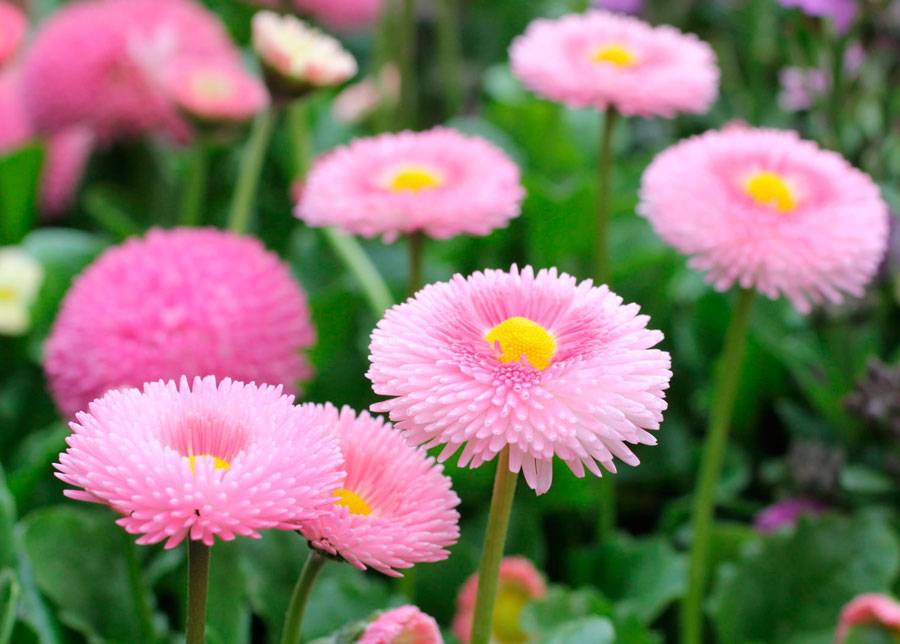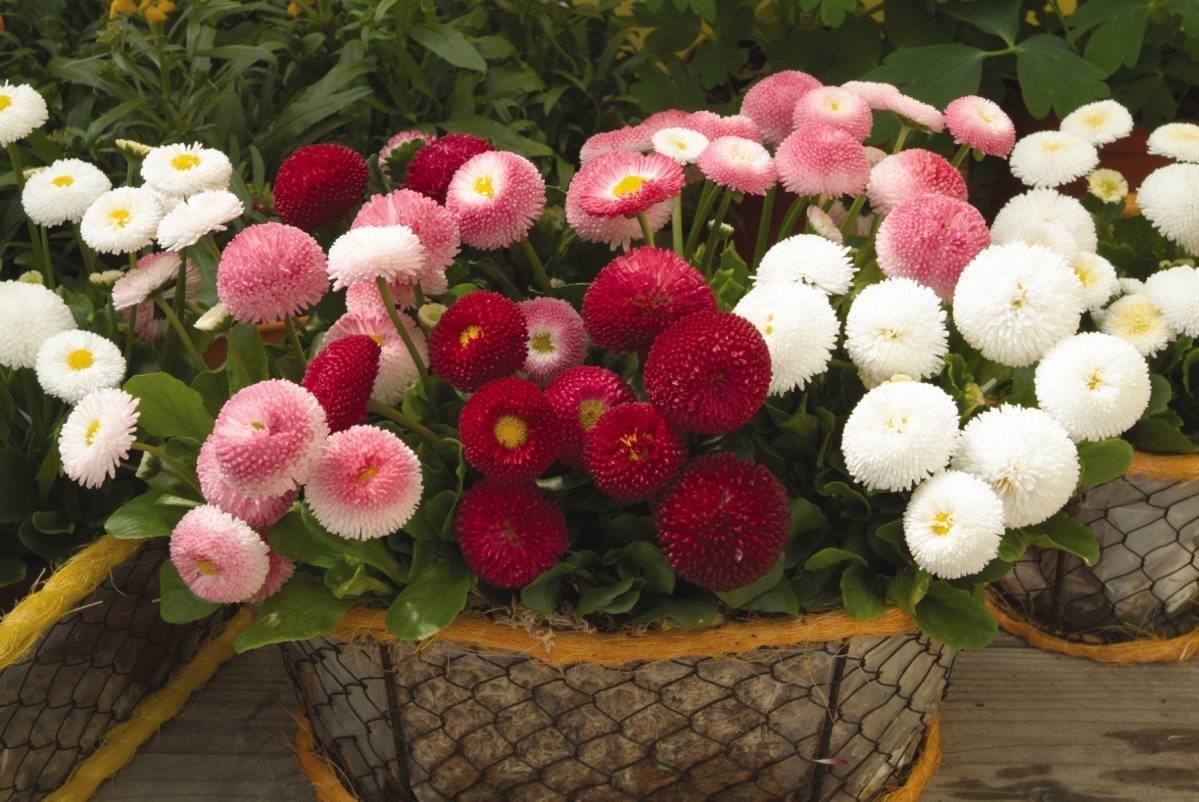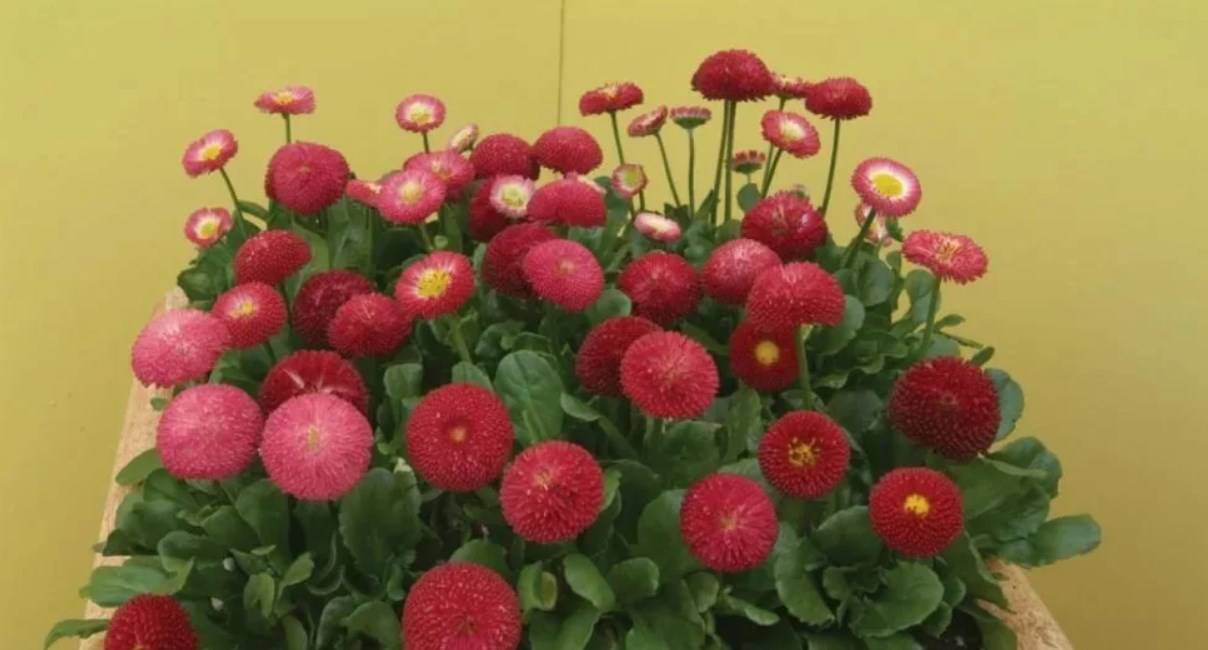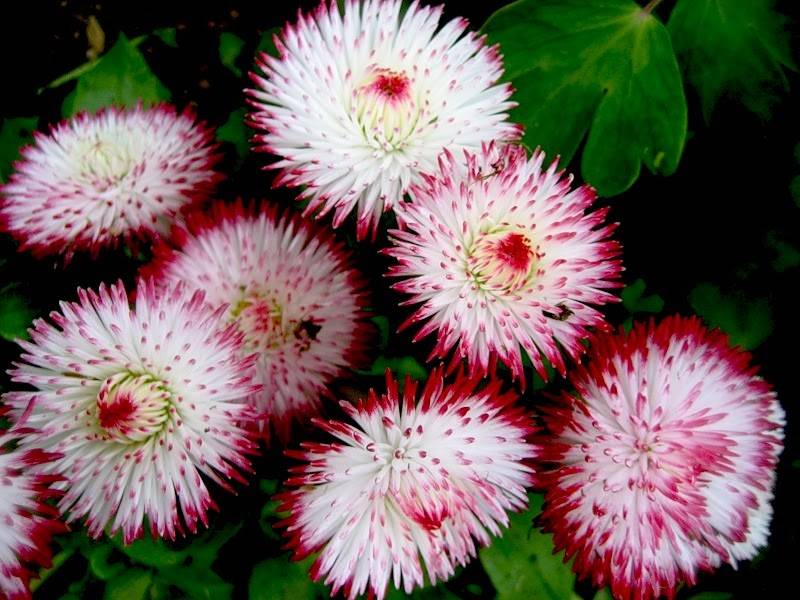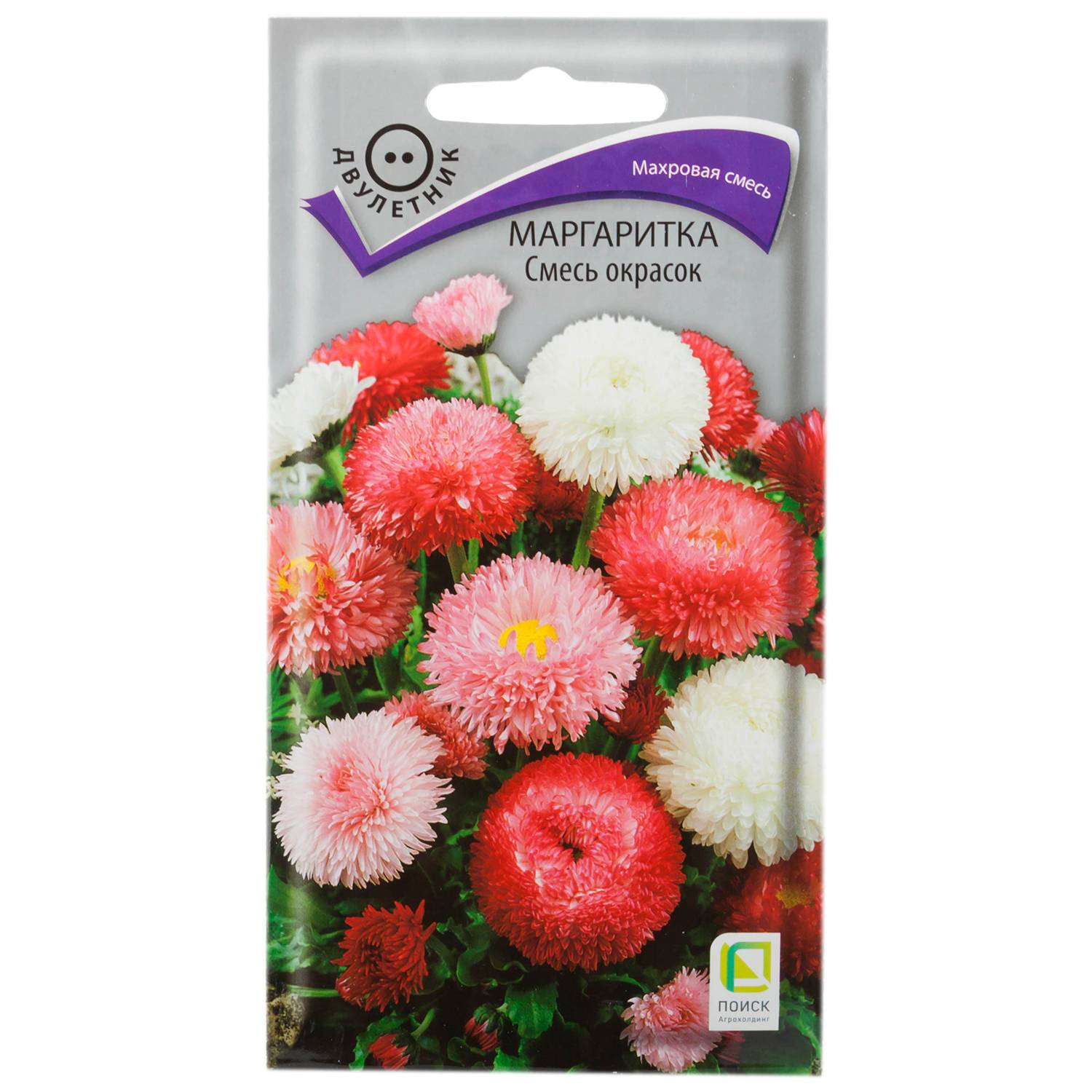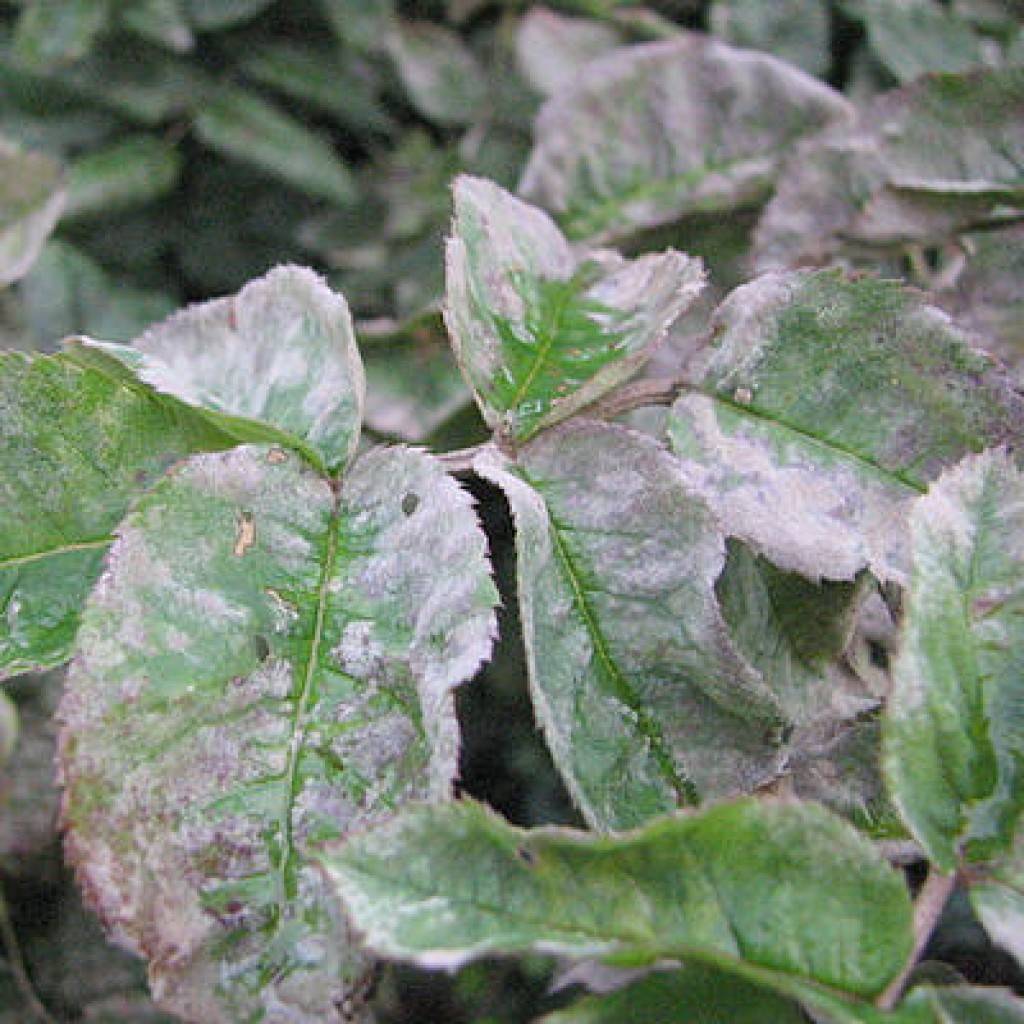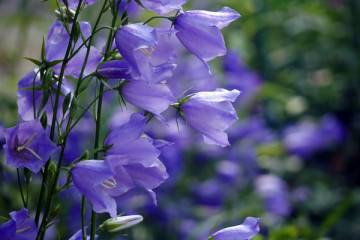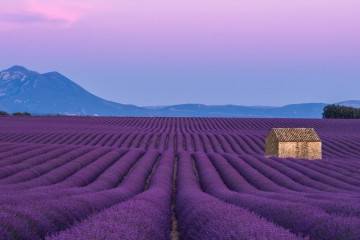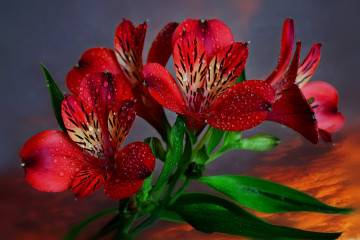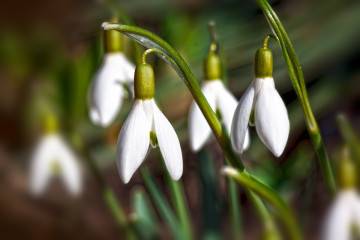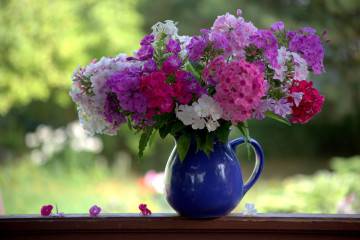Daisies flowers - a description of how they look
Content:
The daisy is a perennial flowering culture that attracts attention with its beauty, growing not only in the personal plot, but also in the wild. Bushes of neat shape and medium size, bright color of flowers give the plant excellent decorative qualities. Daisy is a flower that is actively used in folk medicine, cosmetology and cooking, and this is due to the rich chemical composition of the rhizome, aerial part, petals and buds.
Daisies flowers
The progenitor of cultivated species of daisies are wild wild flowers, which are still widespread and actively grow in the Mediterranean plains. The coloring of the plant is bright, it looks impressive, while being unpretentious in care and cultivation. Today, a flowering culture has many varieties and varieties.
The origin and appearance of the daisy plant
You can hear a lot of incredible stories and legends about this wildflower. In Latin, the name of the plant sounds like Bellis, which means "beautiful, beautiful". They belong to the Asteraceae family, they are also Astrovia.
The nature of origin always originates in beautiful legends, each nation interprets history in its own way. A culture is grown in almost every flower bed, it is considered quite fashionable.
Daisy flower description
Probably there is not a single grower who does not know what daisies look like. This can be explained by the fact that the culture has a strong immunity and is unpretentious in care, it grows in almost all gardens.
The main signs of a flower:
- The aboveground part is a miniature bush, the height of which is about 20 cm, no more.
- The color palette includes over 100 shades. The most common colors are white, yellow, lilac, burgundy and their combination.
- The stem is bare and only at the roots several narrow and long leaves are formed.
- Inflorescences, depending on the variety, can be formed from tubular and ligate petals.
- The root system is branched, but occupies a fairly large area.
- The bushes have a large number of inflorescences.
Many gardeners are wondering how perennial daisies reproduce. Gardeners prefer perennials rather than annuals, because they make it possible to contemplate a more lush and long-lasting flowering. As a rule, the plant blooms in the second year after planting.
When daisies bloom
Subject to the rules of agricultural technology, it is possible to contemplate it from the end of April to the beginning of May. If you follow all agrotechnical rules, the bush will bloom continuously for 2-3 months.
Types and varieties of daisies
Before proceeding with the peculiarities of planting and caring for perennial daisies, you need to familiarize yourself with the existing plant varieties. They are domesticated and wild.In the wild, there are more than 14 varieties, and in floriculture there are only two - annuals and perennials.
Annual flowering crops are predominantly grown in pots and pots, while perennials are planted in open ground. Domestic species number dozens, if not hundreds, of different varieties. Each of them has distinctive features, but most importantly, even a child can cope with caring for them.
Daisy Tasso
The Tasso variety has the following individual characteristics:
- The bush grows no more than 12 cm high.
- The buds can have a variety of colors, but the most common combination of pink and white.
- The petals are tubular, grouped according to the pompom principle into inflorescences.
This variety is considered to be an improved version of Pomponetta.
Daisy Pomponnaya
The Pomponny variety is one of the first to be bred by breeders from France. A characteristic feature of the species is abundant flowering, about 40 buds can bloom at the same time on one bush. The buds are small in size, no more than 2 mm in diameter, but the structure is quite lush.
Habanera's daisy
This variety is the most popular among flower growers who love bright colors. The color of the petals is predominantly deep red or burgundy, but white and burgundy inflorescences are in the greatest demand. The inflorescence reaches 6 mm in diameter, the petals are voluminous, the structure is terry.
Growing daisy flowers from seeds
Novice agronomists often wonder when to plant daisy seeds. The fact is that these plants reproduce excellently in this way. Daisies are prepared from seeds for seedlings in June, sowing them in open soil. It must be moistened beforehand.
There is practically no need to take care of the sprouts. It is enough to plant, and then you just need to make sure that the ground is moist and not surrounded by weeds. Also, the sprouts need warmth.
As a rule, the first seedlings appear 7-10 days after sowing. If the weather conditions are unfavorable, then it is recommended to cover the sprouts for the first time under plastic wrap.
A characteristic feature of seedlings grown from seeds is their rapid development. Such crops will begin to bloom only next year. During the current growing season, green mass will grow and the root system will develop.
With the arrival of spring, when the seedlings appear, they need to be thinned out. Leave strong healthy plants, and remove weak and damaged ones.
Caring for daisies in the garden
Caring for daisies does not require any extra effort. The complex of agrotechnical measures includes:
- regular watering,
- loosening of the periosteal circle,
- application of organic and mineral fertilizers,
- weeding.
The rhizome of a flowering culture is shallow, so the soil should not be allowed to dry out. If you neglect this rule, terry varieties will lose their qualities, and ordinary inflorescences are crushed. To improve aeration of the root system, after watering, the soil is carefully loosened.
If, after planting, the site is mulched, then it is not required to additionally loosen the ground and remove weeds. Also, if mulch is available, you can reduce the frequency of watering as it retains moisture longer.
As for the introduction of mineral and organic fertilizers, then additional fertilizing should be added at least twice during one growing season. Each square meter will require about 25-30 g of complex mineral fertilizers.
Diseases and pests
The plant has a fairly strong immunity, and therefore it is rarely affected by diseases and pests. But do not lose your vigilance, if the rules of agricultural technology are not followed, the culture can get sick with viral diseases.
For example, if in the spring such phenomena as stretching of the pedicel began to be observed, the inflorescences become smaller, and the color of the leaves becomes more faded, then this specimen must be immediately removed along with the root system and burned. The area where they grew is treated with a strong solution of potassium permanganate (manganese).
Daisies can also get sick with powdery mildew. Signs of the development of the disease: a characteristic white bloom spreads over the inflorescences and leaves. In this case, all the bushes must be treated with a solution of insecticidal compounds.
Growing healthy daisies is possible not only for experienced flower growers, but also for beginners in this business. The main thing is to regularly and properly care for the plant and carry out preventive measures aimed at preventing the development of diseases and insect attacks.
